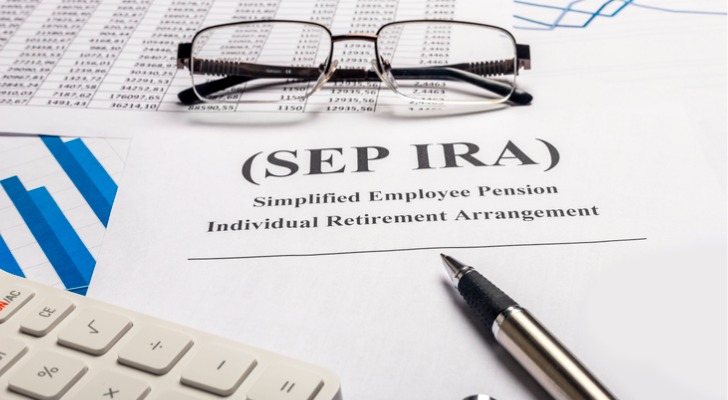

Retirement plans, like simplified employee pension (SEP) IRAs, go hand-in-hand with attractive tax benefits. Designed for self-employed individuals and small business owners, SEP IRAs allow employers to directly contribute to their employees’ retirement accounts and their own. In return, they will receive a tax deduction. However, there are other tax benefits associated with this type of retirement plan.
A financial advisor can help you save and plan for retirement. Connect with a fiduciary advisor today.
While traditional IRAs and Roth IRAs are established outside of the workplace, SEP IRAs are defined contribution plans that businesses of any size can set up for their employees. However, SEP IRAs are particularly attractive for small business owners and self-employed workers because of their simplicity and generous contribution limits.
Unlike a 401(k) plan, SEP IRAs are funded entirely by the employer – not the employee. These contributions, which should be an identical percentage of the salary for each worker, are immediately vested.
SEP IRAs also come with higher annual contribution limits compared to traditional IRAs and their Roth counterparts. Because of these higher contribution limits, small business owners, self-employed individuals, freelancers and independent contractors can enjoy more substantial retirement savings. Plus, the simplicity and flexibility of a SEP IRA make it favored among small businesses with fluctuating profits.
The eligibility criteria for opening a SEP IRA is simple. The IRS stipulates that if you’re self-employed, a small business owner with at least one employee, a sole proprietor, part of a partnership, a corporation, or an S corporation, you can open a SEP IRA. These criteria help ensure that the benefits of a SEP IRA are accessible to diverse business structures.
The participation rules in a SEP IRA closely mirror its intuitive nature. Employees who are at least 21 years old, have been employed with the same employer for three out of the last five years and have received a minimum of $750 in compensation in the current year are considered eligible according to IRS guidelines. Keep in mind that as an employer, you can use less stringent eligibility requirements, but not more intensive ones.
As mentioned above, SEP IRAs come with significantly higher contribution limits when compared with traditional or Roth IRAs. As of 2024, the maximum contribution is the lesser of 25% of the employee’s compensation or $69,000 (up from $66,000 in 2023). These figures, however, may be subject to change, making it important to stay updated on the recent regulations.

Beyond benefiting the employees, SEP IRAs also offer substantial tax benefits to employers. Per the IRS guidelines, employers can deduct the lesser of the contributions made or 25% of the employee’s compensation. Compared with 401(k) plans, SEP IRAs allow for more substantial deductions. However, unlike 401(k) plans, SEP IRAs do not permit employee matching, which could be a trade-off for some businesses.
SEP IRAs offer opportunities for strategic tax planning, particularly for business owners looking to maximize tax efficiency. By contributing to a SEP IRA, a business owner can effectively lower their taxable income and potentially move into a lower tax bracket. Additionally, they can time their contributions strategically to optimize tax savings based on the business’s financial performance.
While employees don’t receive an annual tax deduction for contributing to the plan, they do benefit from the tax-deferred growth of their SEP IRA. This means they don’t pay taxes on the earnings until they take distributions in retirement, which can potentially lead to more robust investment growth. Because the money isn’t taxed until it’s withdrawn, SEP IRA holdings aren’t subject to the same tax drag as investments held in a taxable brokerage account.
Setting up a SEP IRA is a straightforward process involving choosing a willing financial institution, putting the plan in place (often using IRS Form 5305-SEP), notifying employees and initiating contributions.

The tax benefits of offering a SEP IRA to employees are among the most consequential advantages of this type of retirement plan. However, there are drawbacks you should keep in mind as an employer.
Also known as a one-participant or individual 401(k), solo 401(k)s are designed for self-employed individuals with no employees other than a spouse. Unlike SEP IRAs, these plans allow for both employer and employee contributions.
For 2024, the total contribution limit for solo 401(k)s is $69,000, which comprises both the employee and employer portions. Unlike SEP IRAs, people 50 and older can make catch-up contributions to a solo 401(k). As a result, someone who’s 50 or older can save up to $76,5000 in a solo 401(k) in 2024.
SEP IRAs are unique workplace retirement plans that enable employers to make tax-deductible contributions to their employees’ accounts. While SEP IRAs have higher contribution limits than 401(k)s plans and other IRAs, they also confer different tax benefits. Unlike 401(k)s and similar accounts, the employee doesn’t get a tax deduction for the contribution – the employer does. Employers also have the flexibility to increase or decrease their contributions from year to year, giving them more tax planning flexibility.
Photo credit: ©iStock.com/valiantsin suprunovich, ©iStock.com/Prostock-Studio, ©iStock.com/gorodenkoff
Read More About Retirement



SmartAsset Advisors, LLC ("SmartAsset"), a wholly owned subsidiary of Financial Insight Technology, is registered with the U.S. Securities and Exchange Commission as an investment adviser. SmartAsset's services are limited to referring users to third party advisers registered or chartered as fiduciaries ("Adviser(s)") with a regulatory body in the United States that have elected to participate in our matching platform based on information gathered from users through our online questionnaire. SmartAsset receives compensation from Advisers for our services. SmartAsset does not review the ongoing performance of any Adviser, participate in the management of any user's account by an Adviser or provide advice regarding specific investments.
We do not manage client funds or hold custody of assets, we help users connect with relevant financial advisors.
This is not an offer to buy or sell any security or interest. All investing involves risk, including loss of principal. Working with an adviser may come with potential downsides such as payment of fees (which will reduce returns). There are no guarantees that working with an adviser will yield positive returns. The existence of a fiduciary duty does not prevent the rise of potential conflicts of interest.